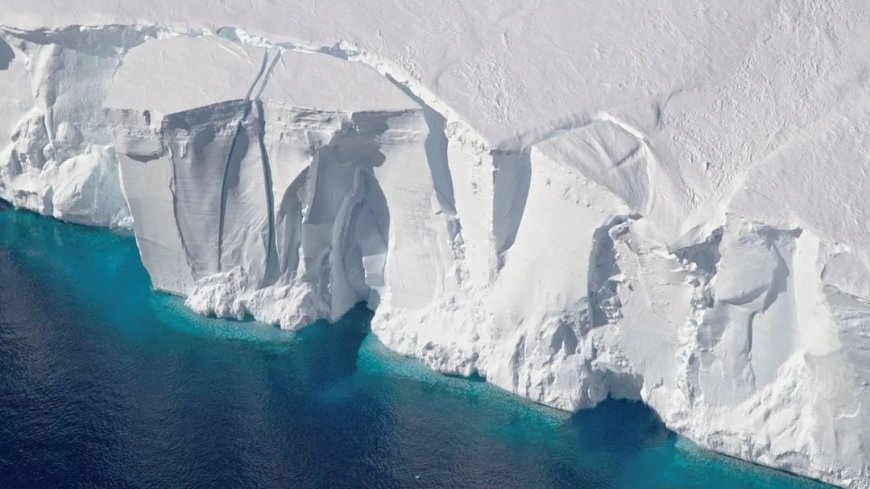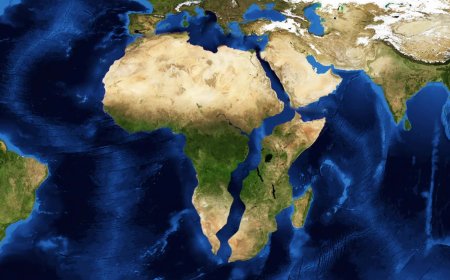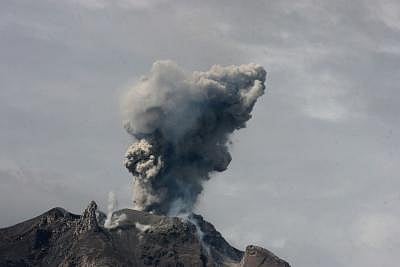A23a: World's biggest iceberg on the move after 30 years

THE world's biggest iceberg is on the move after more than 30 years of being stuck to the ocean floor, reports the BBC.
The iceberg, called A23a, split from the Antarctic coastline in 1986. But it swiftly grounded in the Weddell Sea, becoming, essentially, an ice island.
At almost 4,000 sq km (1,500 sq miles) in area, it's more than twice the size of Greater London.
The past year has seen it drifting at speed, and the berg is now about to spill beyond Antarctic waters.
A23a is a true colossus, and it's not just its width that impresses.
This slab of ice is some 400m (1,312 ft) thick. For comparison, the London Shard, the tallest skyscraper in Europe, is a mere 310m tall.
A23a was part of a mass outbreak of bergs from the White Continent's Filchner Ice Shelf.
At the time, it was hosting a Soviet research station, which just illustrates how long ago its calving occurred.
Moscow despatched an expedition to remove equipment from the Druzhnaya 1 base, fearing it would be lost. But the tabular berg didn't move far from the coast before its deep keel anchored it rigidly to the Weddell's bottom muds.
So, why, after almost 40 years, is A23a on the move now?
"I asked a couple of colleagues about this, wondering if there was any possible change in shelf water temperatures that might have provoked it, but the consensus is the time had just come," said Dr Andrew Fleming, a remote sensing expert from the British Antarctic Survey.
"It was grounded since 1986 but eventually it was going to decrease (in size) sufficiently to lose grip and start moving. I spotted first movement back in 2020."
A23a has put on a spurt in recent months, driven by winds and currents, and is now passing the northern tip of the Antarctic Peninsula.
Like most icebergs from the Weddell sector, A23a will almost certainly be ejected into the Antarctic Circumpolar Current, which will throw it towards the South Atlantic on a path that has become known as "iceberg alley".
This is the same movement of water - and accompanying westerlies - that the famous explorer Sir Ernest Shackleton exploited in 1916 to make his escape from Antarctica following the loss of his ship, the Endurance, in crushing sea ice.
Shackleton aimed his lifeboat for South Georgia, and it's at this island that you will frequently see the big tabular bergs sitting offshore. The blocks' keels mean they have a tendency to get pinned on the British Overseas Territory's shallow continental shelf.
Eventually, all bergs, however big, are doomed to melt and wither away.
Scientists will be following A23a's progress closely.
If it does ground in South Georgia, it might cause problems for the millions of seals, penguins and other seabirds that breed on the island. A23a's great bulk could disrupt the animals' normal foraging routes, preventing them from feeding their young properly.
But it would be wrong to think of icebergs as being just objects of danger - Titanic and all that. There's a growing recognition of their importance to the wider environment.
As these big bergs melt, they release the mineral dust that was incorporated into their ice when they were part of glaciers scraping along the rock bed of Antarctica. This dust is a source of nutrients for the organisms that form the base of ocean food chains.
"In many ways these icebergs are life-giving; they are the origin point for a lot of biological activity," said Dr Catherine Walker, from the Woods Hole Oceanographic Institution, who was born in the same year as A23a. "I identify with it; it's always been there for me."























































































